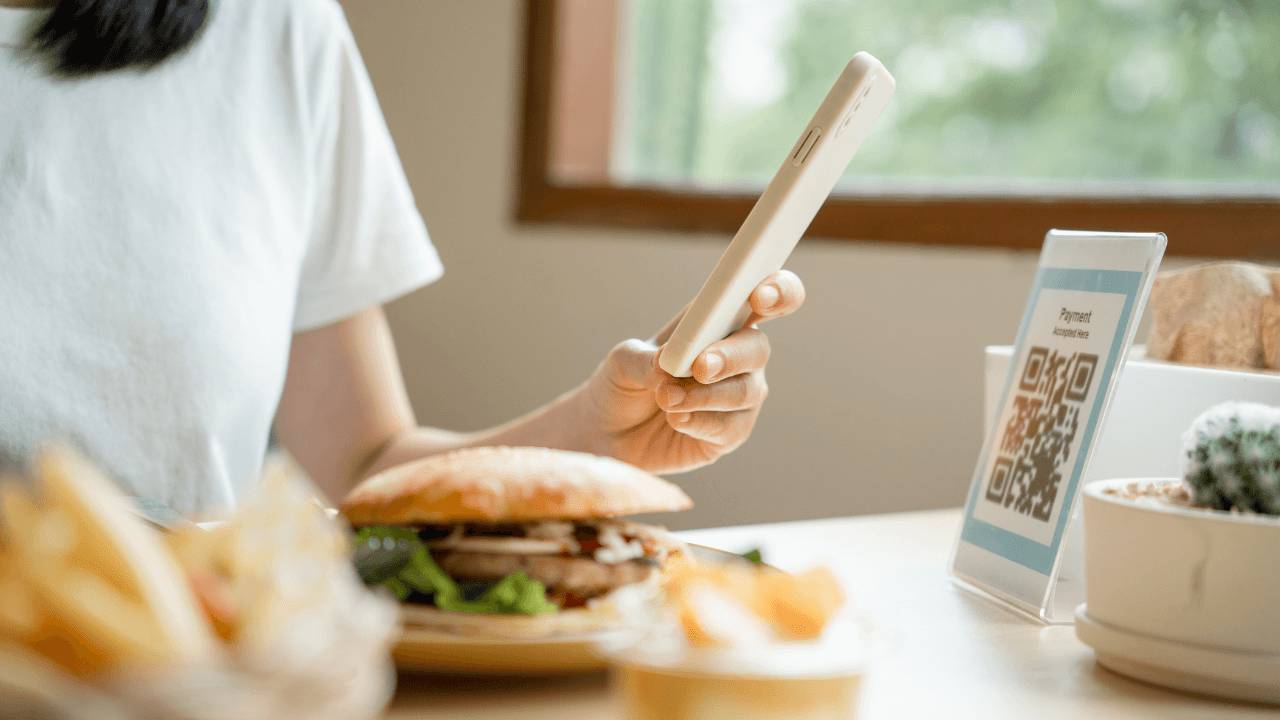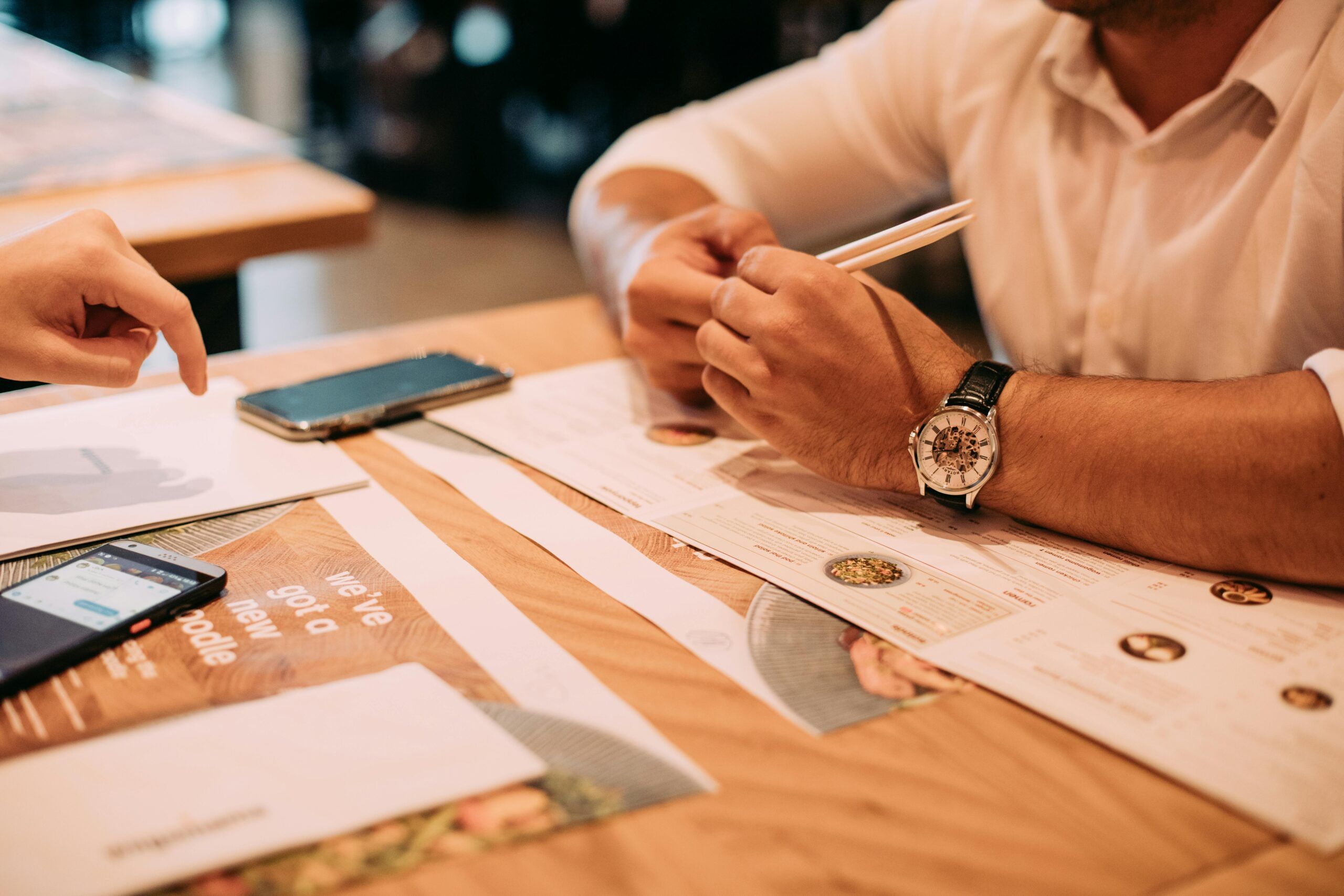- Enhancing Trust through Printed QR Menus
- QR Codes on Memory and Brand Recall
- Rising Market Value of Printed QR Menus
- Navigating Challenges and Implementing Best Practices
After the pandemic, many restaurants saw that QR codes had actual benefits.
Everybody owns phones, so accessing their digital version of the menu through simple scanning was easy. Plus, they saved on continuously printing paper restaurant menus.
But will it still be viable for the next five years? and is it worth investing in them?
In many cultures, looking at the coffee cup to predict the future after someone is done drinking is a common tradition. And sometimes, people can become obsessed with knowing what restaurant trends will take over in the future.
However, it’s best to remain adaptable to the restaurant industry’s changes and redirect your energy towards trends that matter now.
Looking at the stats from 2023 to 2025, QR scanning will only increase!
So, as a restaurant owner, it’s safe to say investing in and adopting QR codes on printed menus can improve operational efficiency and improve customer satisfaction.
Now, let’s find out how!
Enhancing Trust through Printed QR Menus
Trust is a fragile trait. Once broken, it can be pretty challenging to patch things up. Hence, building trust with your customers is crucial to improve loyalty.
Here’s how a dynamic QR code menu can help in cementing that relationship:
Building Customer Confidence
QR codes on a printed menu contribute to building customer confidence by addressing concerns related to hygiene and safety.
In a post-pandemic landscape, where cleanliness is a top priority for diners, the contactless nature of QR menus minimizes physical touchpoints and reduces the risk of germ transmission.
Knowing that the restaurant has adopted modern, hygienic practices can instill confidence in customers, making them feel more comfortable and secure during their dining experience.
Security and Privacy Measures
When implemented correctly, printed QR menus can enhance security and privacy for both customers and the restaurant.
The digital link embedded in the QR code typically leads to secure and encrypted online digital menus. This ensures that sensitive customer data, such as payment information, is transmitted safely.
Additionally, restaurants can implement privacy measures by providing options for guests to access the menu without extensive personal information, fostering a sense of trust in the restaurant’s commitment to data security.
Establishing Transparency in Printed and Online Menu Presentation
Transparency in menu presentation is crucial for building trust with customers. Printed QR menus allow restaurants to provide comprehensive and detailed information about menu items, including ingredients, sourcing practices, and nutritional content.
By offering transparency, restaurants demonstrate openness and honesty, which can positively impact customer trust.
Moreover, the digital format allows for the inclusion of additional details, such as allergen information and dietary preferences, contributing to a more informed and trusting customer base.
QR Codes on Memory and Brand Recall
Your brand is your asset. So, you must ensure that whatever marketing strategy you choose translates to how you want it to.
QR codes can help in enhancing your brand in several ways:
Creating Lasting Impressions
Printed QR menus offer a unique opportunity for restaurants to create lasting impressions on their customers.
The digital content accessible through the QR code can be designed to evoke a memorable experience using engaging visuals, storytelling, or unique branding elements.
Whether through aesthetically pleasing images of signature dishes, compelling narratives about the restaurant’s history, or a creative presentation of menu items, the goal is to leave a positive and memorable imprint on the customer’s mind. This helps build a connection beyond the immediate dining experience, fostering loyalty and encouraging return visits.
The Impact of Visual Design on Memory
Visual design plays a pivotal role in memory recall, and QR menus provide a canvas for restaurants to showcase their offerings visually appealingly.
High-quality images, attractive layouts, and cohesive design elements can enhance the overall aesthetic of the digital menu. Customers who associate a positive visual experience with a particular restaurant will more likely remember and recognize the brand.
Visual cues trigger stronger memory recall, and by leveraging the power of design, restaurants can create a distinct and memorable brand image in the minds of their customers.
Leveraging QR Menus for Brand Recognition
QR menus offer a strategic tool for restaurants to enhance brand recognition. The digital link behind the QR code can be customized to align with the restaurant’s branding strategy. This may include incorporating the logo, color schemes, and other brand elements into the digital menu interface.
Consistency in branding across both physical and digital channels reinforces the restaurant’s identity. As customers repeatedly interact with the QR menu and associate the brand elements with positive dining experiences, it strengthens brand recognition.
This recognition extends beyond the dining space, potentially influencing word-of-mouth recommendations and social media engagement.
Rising Market Value of Printed QR Menus
What’s the market value of QR menus?
Let’s sum it up in these three points below:
Adaptation to Changing Consumer Behavior
The rising market value of printed QR menus is closely tied to their ability to adapt to changing consumer behavior. Modern consumers are increasingly tech-savvy and prefer seamless, digital interactions.
Printed QR menus align with this shift in behavior by offering a convenient and contactless way for customers to access menu information. By acknowledging and accommodating these changing preferences, restaurants demonstrate agility and responsiveness, which can positively impact customer satisfaction and loyalty.
The adaptability of QR menus positions restaurants to meet the expectations of a diverse and evolving customer base.
Competitive Edge in the Digital Era
In a digitally-driven era, restaurants that embrace innovative solutions like printed QR menus gain a competitive edge.
The ability to provide a tech-forward and efficient dining experience sets a restaurant apart from competitors that may still rely on traditional paper menus. This competitive edge is not only about meeting current customer expectations but also about future-proofing the business.
As the digital landscape continues to evolve, establishments embracing technology in their operations are better positioned to stay relevant and attract a broader customer base, including those prioritizing technology-enabled services.
Your Inbox, Your Rules!
Tailor your newsletter with the topics you're most interested in.
Cost-Efficiency and Sustainability
Printed QR menus contribute to the rising market value by offering cost-efficiency and sustainability benefits to restaurants. Traditional paper menus incur recurring costs for printing, and any updates or changes require additional printing expenses.
In contrast, QR menus significantly reduce or eliminate these costs, as updates can be made digitally without needing physical reprints. This cost-effectiveness aligns with sustainability goals by minimizing paper waste.
Restaurants that adopt QR menus benefit from streamlined operations and appeal to environmentally conscious consumers who appreciate businesses making efforts to reduce their ecological footprint.
Navigating Challenges and Implementing Best Practices
As with anything, smooth sailing is not always expected. You might often encounter hurdles and rough tides that can affect your QR code adoption.
Here are some examples of challenges and how to navigate through them:
Overcoming Resistance to Change
Introducing printed QR menus may encounter resistance from staff and customers accustomed to traditional paper menus. To overcome this resistance, effective communication and training are crucial.
Staff members need to understand the benefits of QR menus, such as improved efficiency and hygiene, and be equipped to assist customers in using them.
Clear signage and communication within the restaurant can help educate customers about the transition, addressing concerns and emphasizing QR menus’ enhanced experience and safety.
Technical Considerations and Accessibility
Technical considerations are vital in the successful implementation of printed QR menus. Ensuring that the QR code links to a user-friendly, accessible, and mobile-responsive digital menu is essential.
The menu should be compatible with various devices and operating systems to accommodate a diverse customer base. Restaurants must consider factors such as internet connectivity, page load times, and the overall user experience to prevent technical glitches that could frustrate customers.
Accessibility features, such as text-to-speech compatibility or options for larger text, should also be considered to cater to a broader audience, including those with disabilities. That’s why using a reliable QR code generator is crucial to ensure everything goes smoothly when customers scan your code.
Successful Integration Strategies for Restaurants
Successful integration of printed QR menus involves a strategic and phased approach. Restaurants should begin by conducting thorough staff training to ensure a seamless transition. This includes educating servers on how to assist customers with QR code scanning and addressing any technical issues that may arise.
Additionally, marketing efforts can be employed to inform customers about the new system before they arrive, creating a sense of anticipation. Offering incentives, such as special discounts or promotions for using the QR menu, can encourage customer participation.
Regular feedback collection and adjustments to the system based on customer input contribute to continuous improvement and refinement of the printed QR menu integration.
Embracing the Innovation of QR Code Menus in Dining
The adoption of printed QR menus represents a pivotal moment in the evolution of dining experiences. As restaurants navigate the changing landscape of consumer preferences, technological integration, and sustainability considerations, the implementation of QR menus stands out as a versatile solution that addresses various challenges while unlocking new opportunities.
The journey from overcoming resistance to change, addressing technical considerations, and strategizing successful integration requires a commitment to enhancing customer experiences and operational efficiency.
As the hospitality industry continues to evolve, restaurants that embrace the benefits of printed QR menus position themselves as forward-thinking establishments capable of meeting the demands of a dynamic and digitally driven market.
How Orders.co Can Help:
For restaurants seeking a seamless transition to printed QR menus, Orders.co offers a comprehensive solution.
It lets you create and manage a digital contactless menu with integrated QR codes. Our service allows restaurants to have a custom QR code, personalized menu layouts, updated content in real-time, and monitor customer interactions.
With a focus on accessibility and a commitment to enhancing the dining experience, Orders.co empowers restaurants to leverage the advantages of QR menus efficiently, from improving customer trust to staying competitive in the digital era.



